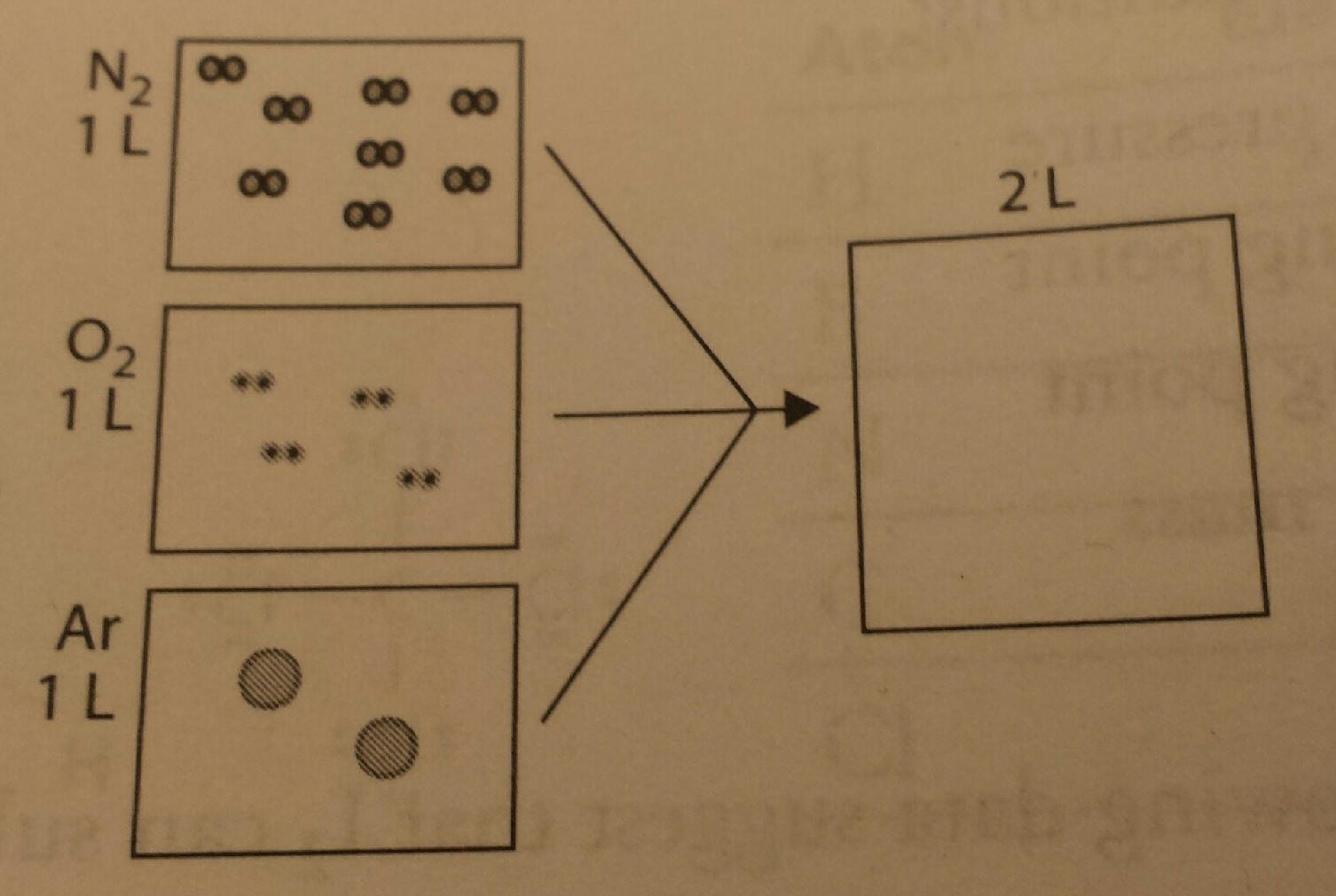
Journal Entry:

The figure above represent three sealed,
rigid 1 L containers each containing a gas at 298 K. The pressure of the
nitrogen gas is 4 atm. The ratio for the number of gas molecules is shown in the
diagram. What is the total pressure at 298K after the gases are combined into a
previously evacuated 2 L container? Assumer the gases will not react when
combined.
(A) 3.5 atm
(B) 7 atm
(C) 14 atm
(D) 28 atm
Learning Intentions
We will learn what variables affect properties of a gas.
We will learn the ideal gas law equation, including what each letter in the equation stands for and the proper unit for each variable.
We will learn how to solve for any unknown variable using the ideal gas law equation.
We will learn other equations related to gases.
We will learn how to design an investigation to determine the molar mass of a volatile liquid.
Closing Task:
You can create a plan to determine the molar mass of an unknown volatile liquid.
Content Standards being covered:
The gaseous state can be effectively modeled with a mathematical equation relating various macroscopic properties. A gas has neither a definite volume nor a definite shape, because the effects of attractive forces are minimal, we usually assume that the particles move independently. (E.K. 2.A.2)